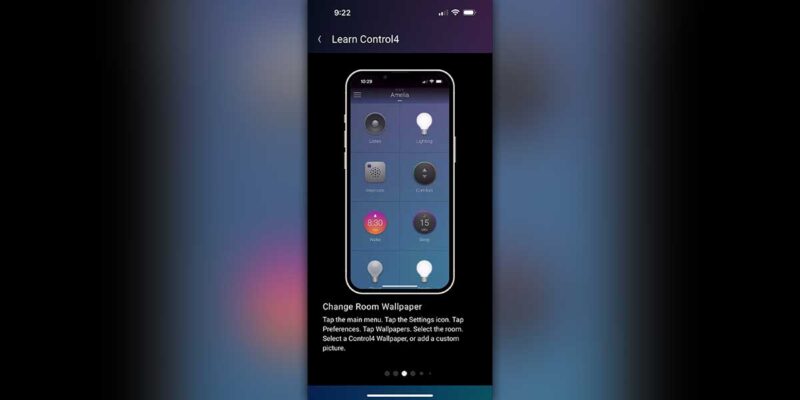The Demand for AV as a Service: A Tech Manager’s Perspective
There seems to be a continuing debate out there on the demand for a true AV as a Service, (AVaaS) model. I have seen good points on both sides of the argument, each giving some logical reasons as to why a true AVaaS model is either the future of AV or an idealistic pipe-dream.

There are all sorts of ideas on how AVaaS would be facilitated financially speaking. Will manufacturers bear the brunt of the cost by seeding their products into AV systems for a monthly payment instead of an up-front purchase price? Will larger integrators with cash flow surpluses fuel an AVaaS model? Will equipment leasing companies play a role in providing this cash flow? Will larger investment banking companies continue to buy up AV companies and use their existing capital to take market share? Will the new tax laws that allow for 100 percent equipment depreciation in year one allow companies to effectively buy mass amounts of equipment realizing a 100 percent commensurate tax break in the same year?
All of these are good questions, and several of the ideas could be the key to AVaaS, however, these are logistical questions. Without a demand for AVaaS, they are really just academic concerns. The larger question becomes,
Is there a demand for AVaaS in our typical conference and meeting room environments in the first place?
Before I address that, we need to understand why AVaaS is suddenly more relevant than ever.
Convergence.
Ignore any buzzword connotations this term may ignite in your mind. The truth is that now that most of our AV devices are IP enabled and many of our appliances have been turned into cloud-based apps, creating AVaaS offerings that leverage limited hardware investments is more realistic than it has ever been.
I know a tech manager that manages hundreds of AV systems across as many rooms throughout the country. Due to his high profile, he asked me not to use his name here, but he did offer me his thoughts for print.
I talked to him this summer about AVaaS and his first comment related to the very convergence I referred to above. According to him:
“In my opinion, AV as service will begin to take shape in these markets as more pressure from the IT force wins big on budget control. For me, I’m in!!! AVaaS with utilizing and leveraging true network protocols (talking Ethernet layer 3). I really look at AV as just another service on my network. A network that exists everywhere!”
If you start to think of AV in this way, then you can leverage resources across multiple rooms and implement a licensing per room or even per-use model with an appropriate Service Level Agreement (SLA) based on the customer needs and the intended purpose of the system.
He went on to ask,
“Can you see buying DSP or video distribution as a service? It’s all there ready to go!”
Let’s explore that idea. Take a typical conference room. Now outfit that room with IP enabled equipment including powered speakers, a beamforming microphone, an IP camera, and a connected display. An on-prem or cloud-based server would be running DSP and control sessions for the devices in the room, and a wireless presentation software would allow BYOD devices to not only control the room, but also share content wirelessly through the existing wireless access points. A corporate-wide content management system would replace the traditional AV matrix switch, as content would all be stored in the cloud or on a server and delivered on demand to whatever speakers and display(s) happened to be assigned to that meeting, regardless of location.
This type of arrangement would require very little upfront capital expenditure for the limited hardware in each room while leveraging the existing network for management and distribution as well as existing devices for control.
So what’s stopping the industry from developing this level of AVaaS?
When I asked this question to the tech manager I know, he went on to talk about what he feels is the biggest challenge for AVaaS adoption. Ironically, he doesn’t believe it has anything to do with market demand, but rather to some of the industry’s resistance to change.
“The single biggest challenge we face in AV is knowing how our customers expect to use AV. This requires a tremendous amount of flexibility when looking at providing the best possible, most cost-effective solution. The only way to reach this type of customer is AVaaS, in my opinion. This kind of thinking is pretty disruptive since AV design firms, AV integrators and AV manufacturers are very satisfied with the current “build the empire” model (monster control systems, complex audio and video routing systems) including touch panels installed in the rooms that typically require an IT/AV person to navigate.”
Many end-users are ready for a change. They don’t want to be tied to legacy systems any longer. The very fact the Alexa is even being considered as a viable alternative to the robust systems of the past tells us that customers haven’t always realized the full value of these systems.
“I don’t want my customers having to call for IT support to set up a conference call in a meeting room. Simple is AVaaS in my opinion. This empowers the user and customer base to only pay for what they want. For me, I want my users to walk into a room, and see a simple device that looks a lot like something they have at home.”
So is there a market demand for AVaaS in all markets? I would argue that there is and I know quite a few others who think the same thing. The question that remains is who will develop the first full-fledged offerings? Will it be a manufacturer or an integrator or maybe even an IT services company?
I’d love to hear your thoughts on AVaaS below, especially with regards to any end user conversations you’ve had on the topic.





